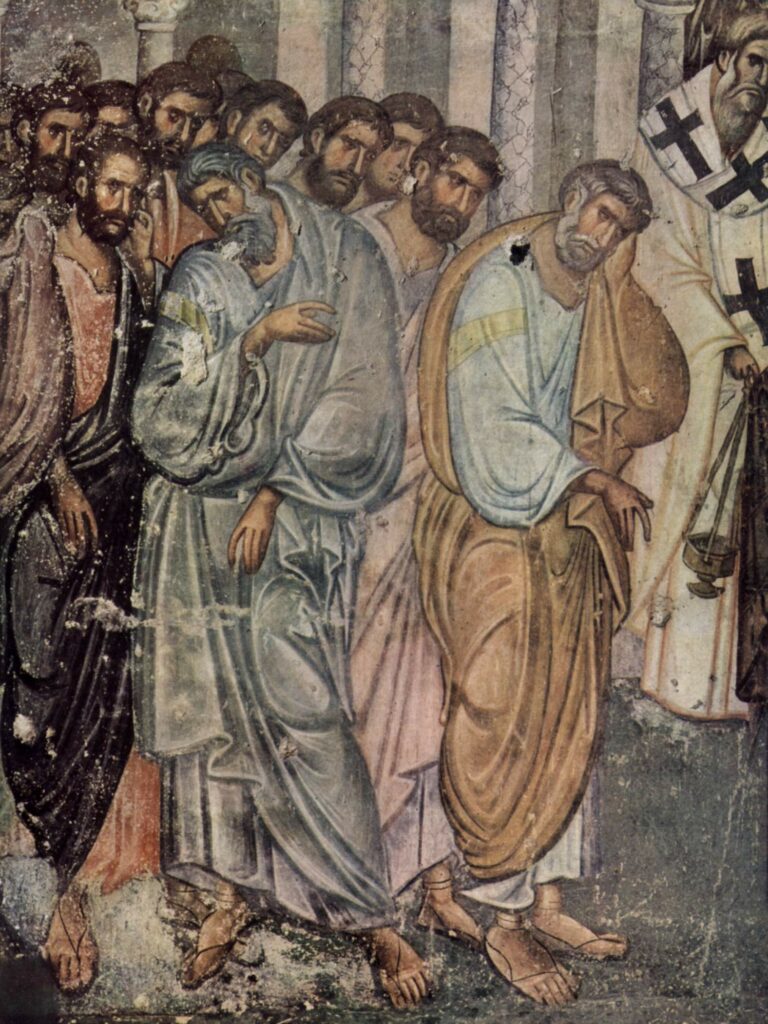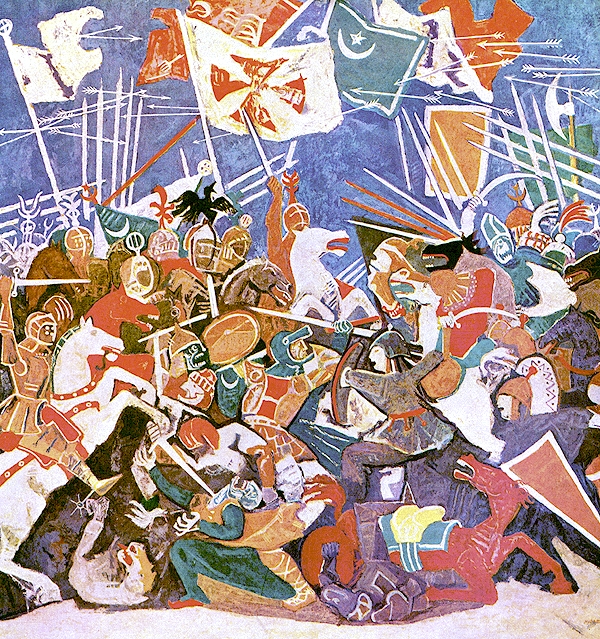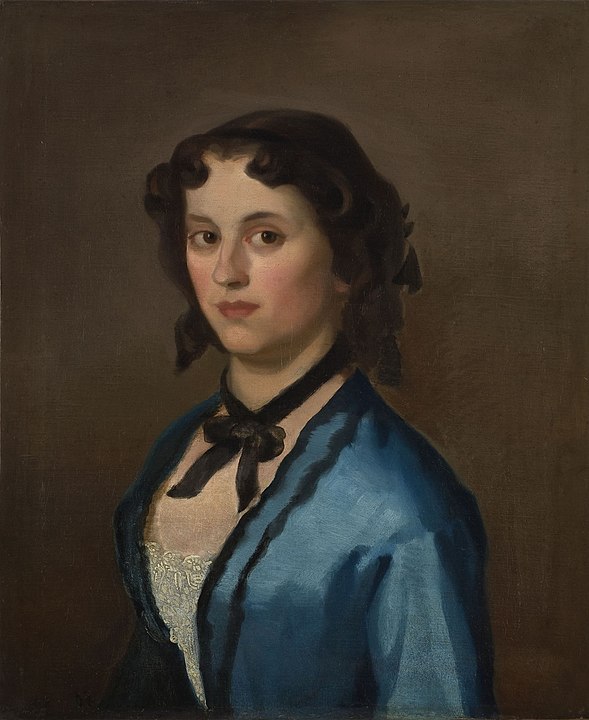Medieval painting in Serbia
We take you on a tour through the history of painting in Serbia
Serbian painting developed within the Serbian art of building and decorating the walls of churches that were built by the Serbian nobility and kings in the 12th, 13th and 14th centuries.
Nurtured between two worlds, the western and the eastern, Serbian painting received the influences of both and grew into an art specific and recognizable art. This art was inextricably linked with the history, culture and literature of the Serbs in the Middle Ages.
The turning point in the development was the Great Migration of Serbs in the 17th century under Patriarch Arsenij Čarnojević, when Serbs became involved in Western European culture in which the bourgeoisie strengthened and brought Baroque-style art. Serbian romantics were also noticed in the 19th century, while at the beginning of the 20th century, Serbia had notable representatives in Surrealism, Cezanne, Cubism, Expressionism, but also Neoclassicism.
Serbs nurtured three genres of painting - wall painting or frescoes, painting on wooden boards or iconography and painting on parchment or miniatures, or illumination in books or manuscripts. The structure of the painting in Serbia is monumental and the compositions are large in scale. The painting is shallow and the architectural form flows so as to enclose a shallow space. The figure is often set and restrained in movement. Changes occur in the 13th century, beginning in the 10th century. In Western Europe, the wall painting was destroyed by the appearance of stained glass. There are certain qualities in Italy. In this age, Serbian art is certainly at the highest level. The figure gained in plasticity. The composition is more complex, more faces appear and a deeper space is created. Serbian art has known it since before, and in the 13th century the reverse perspective came to the fore, which possesses unreal properties, pulls it out of the real painting space and subordinates it to the composition and laws of painting. The space is connected by a wall that flows together with the observer. During the 14th century, the monumentality characteristic of the 13th century gradually declined. A dramatic moment is emphasized. The drapery that develops between the elements is disturbed and participates in the composition of the painting. The painting of the Moravian School takes care of the detail and the pleasing color of the painting. Among the monuments of the Resava school, the exceptions are Resava painting and Manasian painting, and it strives for a rare and sought-after coloristic harmony. During the time of the Turks, limited measures around the Patriarchate of Peja tried to restore the level at which painting was in the 13th century. The masters who made the frescoes are mostly unknown, and if they sign, they do it in a place that can hardly be seen, such as Makarije in Ljubostinja, Jovan in Ravanica and others. They worked for fame in another world.

The life of painting among Serbs in the Middle Ages was determined by factors of different values and strengths, among which are certainly the most important: size, power and destiny of Serbian state creations, confessional affiliation of the people and the position of its church institutions in relation to Constantinople and Rome. , the purpose of religious painting, but also its political role.
The time frame of painting creation among Serbs in the Middle Ages can be precisely determined. According to its content, religiously, without a single lay trace, it was implanted in the Serbian environment after the acceptance of Christianity, in the second half of the 9th century. True, the first works were destroyed - the oldest are preserved from the end of the 10th century. It was extinguished in parallel with the disappearance of the last Serbian state just before the end of the 15th century, when it lost some of its important creative properties.
Figures of restrained movements, almost without plasticity, reduced in color to ocher and pink tones, with two-tone white and yellow backgrounds, have distant similarities with rare Byzantine provincial products from the end of the 10th and the beginning of the 11th century (Koropi na Atici, Sv. Stefan in Kostur). Highly washed, these frescoes do not provide much information about the mixtures of Byzantine and Western stylistic expression.
There is more evidence of that in the works from the area of the Zeta state, Dubrovnik and its surroundings. Fragments of frescoes from the Dubrovnik Cathedral, from the churches of St. Nikola na Prijekom and Sv. Elijah on Lopud, mostly found during archeological excavations, show that, in the decades around 1100, the city had a favorite painting in which Byzantine types of saints and Byzantine stylization of forms were simplified in a Romanesque way: the drawing was significantly thickened, shadows intensified. the modeling is left without halftones, and the expressiveness of the face and movement is underlined.
The balanced relationship between Byzantine and Romanesque stylistic features knew how to be disturbed in Dubrovnik's works, with the predominance of some; the Romanesque, Western one would prevail most often. That is how it is in the program and style of painting in the church of St. Jovana Preteče on the island of Šipan. Byzantine features are represented only in the program of the apse with Deisis and the church eyes, where even some saintly figure resembles the Byzantine prototype of the nave and the Romanesque vault angels.
In the painting of painters who now studied in Vienna, as well as with their professors who influenced them, the Baroque century was extended and so Biedermeier appeared in the 19th century, which was the main mark in the art of Bačka at that time. One coloristic sensibility can be seen in Arsa Teodorović, Nikola Aleksić and Konstantin Danilo, who is the most important of them. These artists also nurtured portrait art.

Petar Lubarda, Kosovski boj
In the early 1840s, painting moved away from Biedermeier and classicism to romanticism. Serbian historical painting was without pathos and drama and often had an anecdotal character and tends to bind the viewer to the patriotic contents of the work. This style was overcome by Đura Jakšić, who was delighted with the play of light and shadow on the works of Rembrandt and with him 1850-1870. Serbian romanticism reaches its peak.
New motifs appear, paintings of landscapes, still lifes, genre scenes from life and new understandings of Munich students Miloš Tenković, Đorđe Krstić and Đorđe Milovanović. Historical paintings also appeared before the new roles, and thus large and pompous compositions "Migration of Serbs" by Paja Jovanović in 1896, "Entry of Tsar Dušan into Dubrovnik" by Marko Murat from 1900 and "Proclamation of the Serbian Empire" by Paja Jovanović from 1900 were created.

Djura Jaksic-Devojka u plavom
The middle of the 19th century is also marked by the work of the first women in Serbian painting: Mine Karadžić, Katarina Ivanović and Poleksija Todorović.
Source: Wikipedia, riznicasrpska.net, serbia.com








